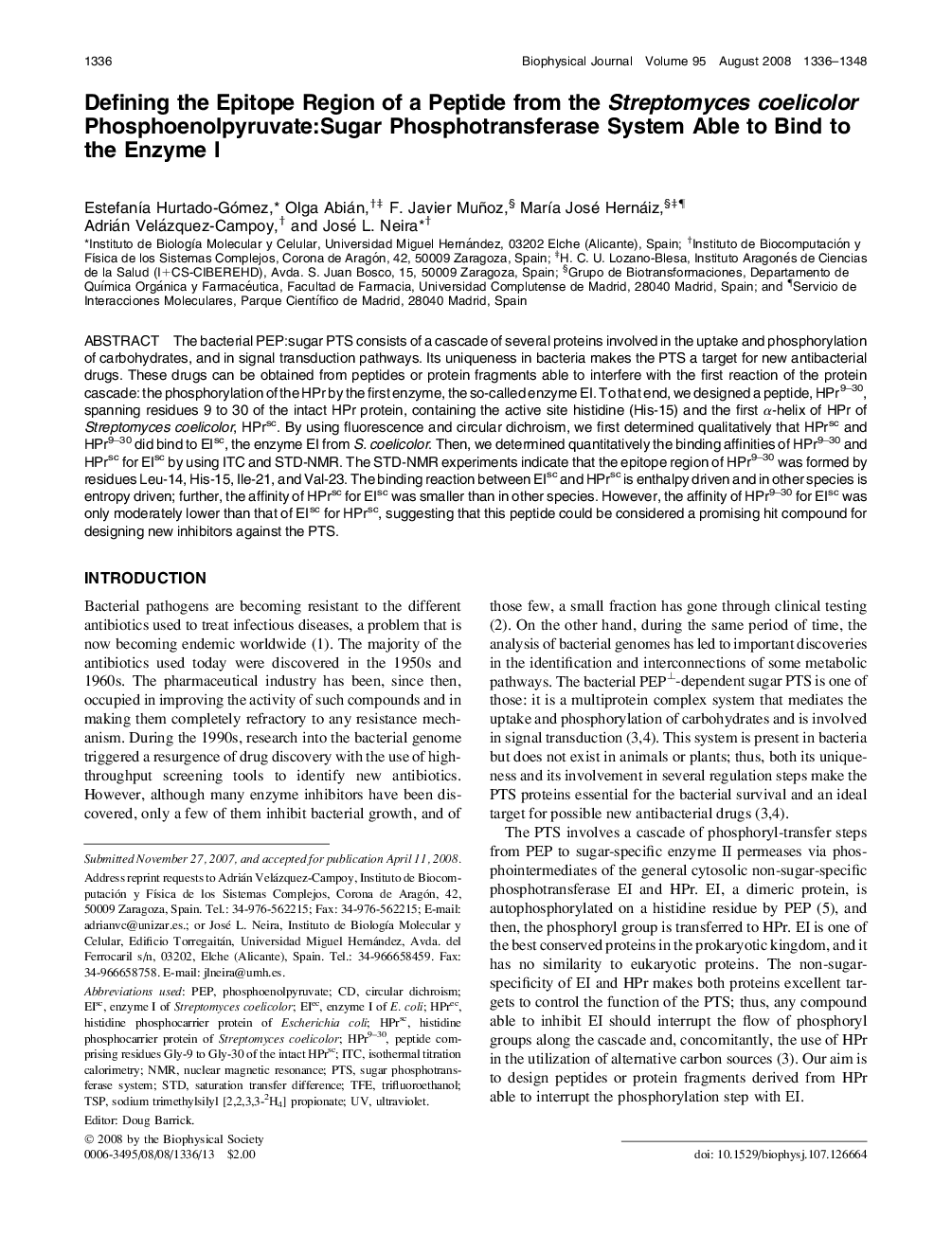| Article ID | Journal | Published Year | Pages | File Type |
|---|---|---|---|---|
| 1954913 | Biophysical Journal | 2008 | 13 Pages |
The bacterial PEP:sugar PTS consists of a cascade of several proteins involved in the uptake and phosphorylation of carbohydrates, and in signal transduction pathways. Its uniqueness in bacteria makes the PTS a target for new antibacterial drugs. These drugs can be obtained from peptides or protein fragments able to interfere with the first reaction of the protein cascade: the phosphorylation of the HPr by the first enzyme, the so-called enzyme EI. To that end, we designed a peptide, HPr9–30, spanning residues 9 to 30 of the intact HPr protein, containing the active site histidine (His-15) and the first α-helix of HPr of Streptomyces coelicolor, HPrsc. By using fluorescence and circular dichroism, we first determined qualitatively that HPrsc and HPr9–30 did bind to EIsc, the enzyme EI from S. coelicolor. Then, we determined quantitatively the binding affinities of HPr9–30 and HPrsc for EIsc by using ITC and STD-NMR. The STD-NMR experiments indicate that the epitope region of HPr9–30 was formed by residues Leu-14, His-15, Ile-21, and Val-23. The binding reaction between EIsc and HPrsc is enthalpy driven and in other species is entropy driven; further, the affinity of HPrsc for EIsc was smaller than in other species. However, the affinity of HPr9–30 for EIsc was only moderately lower than that of EIsc for HPrsc, suggesting that this peptide could be considered a promising hit compound for designing new inhibitors against the PTS.
